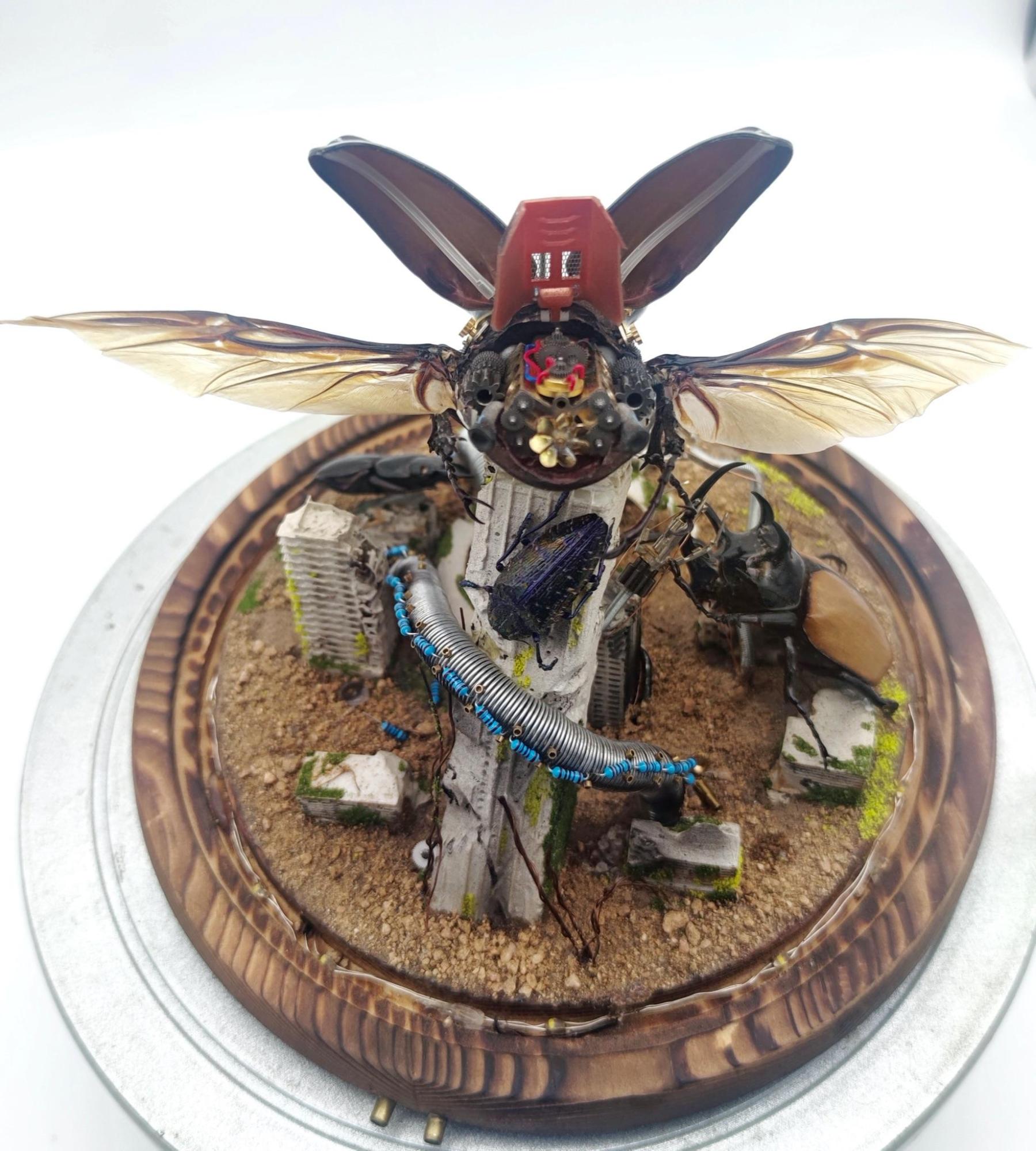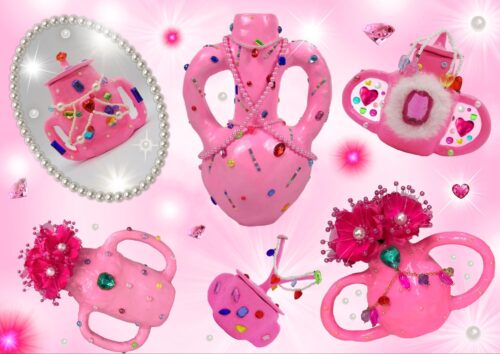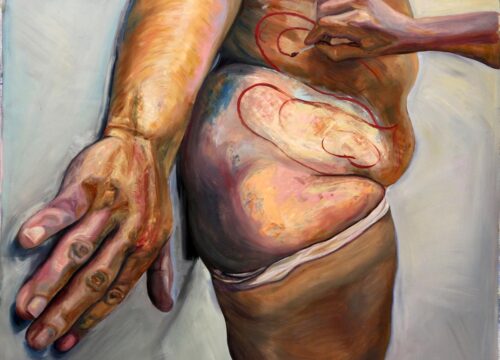Chinese steampunk: The art of reviving dead insects
An intersection between the worlds of insect and cybernetics enthusiasts.
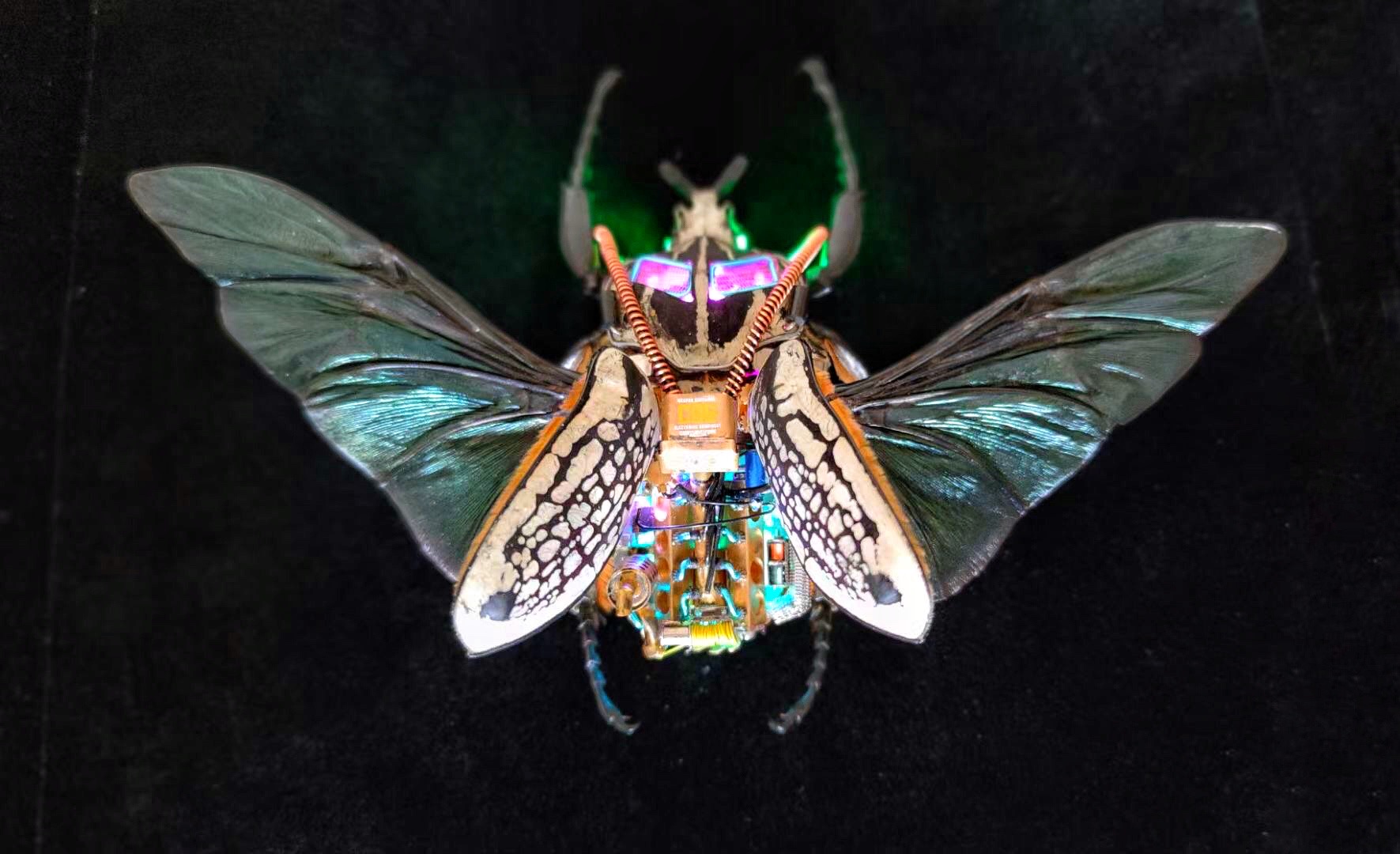
Carving carefully from a Caucasus beetle, Wáng Péng 王鹏 removed the insect’s intestines and replaced it with a gear and engine. Frowning, Wang seemed determined to put all of his whimsical ideas into these intricate pieces. Holding his breath with a serious expression, Wang pressed a button. The beetle’s wings started to vibrate as if it had come to life.
This is what making steampunk insects is all about — turning dead bugs into pseudo-Victorian art pieces by adding mechanical components like wheels and motors.
“Insects and mechanics always lure me in a special way,” said Wang, smiling.
The 40-year-old Wang has been working as a full-time steampunk insect artist for the past year. He quit his job as a senior engineer and now spends up to a week finishing just one piece. His creations sell for more than 4,000 yuan ($620) on Alibaba’s ecommerce platforms Taobao and Idle Fish.
Wang told me that the market has been lucrative so far. “I can make up to 100,000 yuan ($15,500) per month by selling steampunk insect artwork these days, which is far more than what I earned as an engineer,” he said.
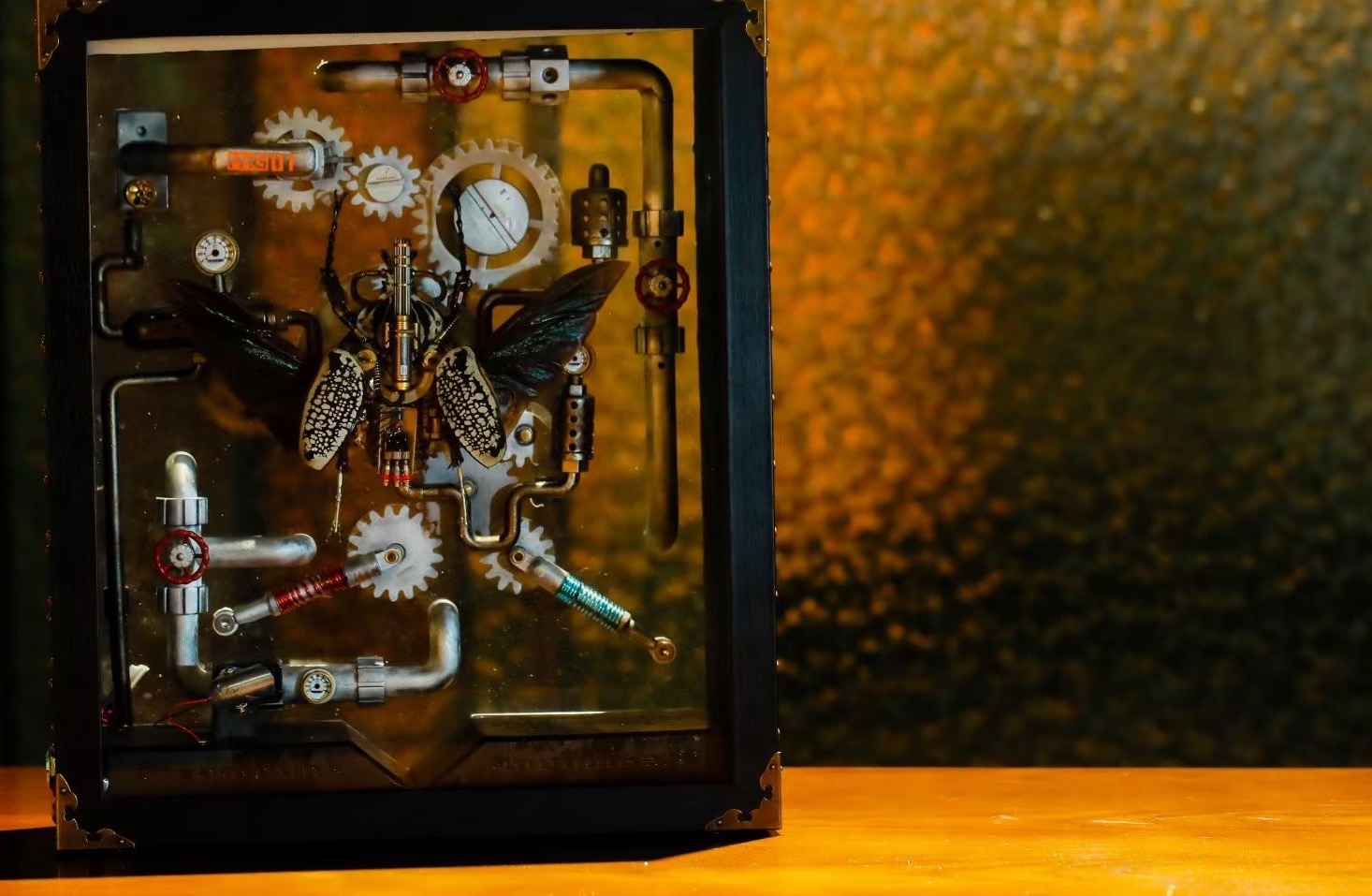
In China, the market for steampunk insects has developed rapidly. The community was first founded by a Shanghai-based young designer known online as Lán Túsī 蓝图斯. In 2014, he formed a steampunk insect club on the Reddit-like forum Baidu Tieba. To this day, the group maintains an active presence with around 23,000 members and an archive of 75,000 posts.
Wang was first introduced to this art form last year when he saw Lan’s work on social media. Instantly drawn to the otherworldly beauty of the elaborate pieces, Wang started to buy dry insects and obsolete mechanical parts from independent vendors to imitate Lan’s pieces.
But instead of simply gluing the components together, as Lan does, Wang invented “dynamic insects,” in which he puts motors inside of the bugs’ bodies, making them move as if they were “alive.” He now owns a patent for the motor and has been selling this device in China and overseas via Amazon.
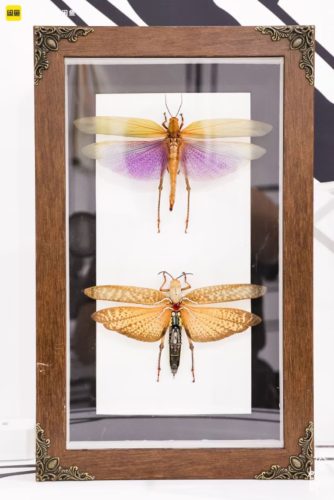
The steampunk culture originated from Western science fiction films. The machinery aesthetic influenced by the steam-powered 19th century often speaks to futuristic fantasy. Drawing visual cues from late Industrial Age Europe, movies like the lavish Victorian steampunk adventure Steamboy and the Studio Ghibli classic Howl’s Moving Castle were big hits in China.
The steampunk insect craft was first created by a contemporary American artist named Mike Libby, who established Insect Lab in 1999 to make insect specimens using recycled materials. In 1998, Libby came up with this idea when he noticed the surprising similarity between a dead intact beetle and a mechanical device. He then used mechanical parts from his broken wristwatch to combine the two.
In Wang’s view, insects are powerful creatures. “I think insects are aliens from outer space. They’ve got nearly everything humans have and a plus — wings,” he said.
Wang is not alone in appreciating the unusual beauty of bugs. In fact, the boom of the steampunk insect market was in part driven by the rising number of bug lovers in China, many of whom see keeping exotic insects as a stylish hobby. According to a survey conducted by Jiangsu Vocational College Agriculture and Forestry this May, nearly 50% of respondents said that they were willing to purchase insects as pets or to do insect artwork.
Since last year, there has been a 70% increase in sales of Wang’s insect artwork. “I saw a surge in consumers’ purchasing behavior in the past two years and I believe the future is promising,” he said.
Mike Libby came up with this idea [of steampunk insect craft] when he noticed the surprising similarity between a dead intact beetle and a mechanical device.
Lǐ Nè 李讷, a 19-year-old college student, told me that he really enjoyed collecting the insect artwork even though they are usually sold at a hefty price. “The collision between nature and mechanics created a spark that attracted me,” Li said.
Wang’s customers vary from students and businessmen to housewives. But many of them often have “unreasonable” requests for him, Wang said. There was a time when a customer wished to have a steampunk insect customized with the ability to talk, like the virtual assistant Alexa.
“I guess that customer really wished my insect artwork could be his friend and listen to his worries in life,” Wang said. Even though he politely rejected the request, Wang is looking into incorporating coding into his artwork to make his insects “talk” one day.
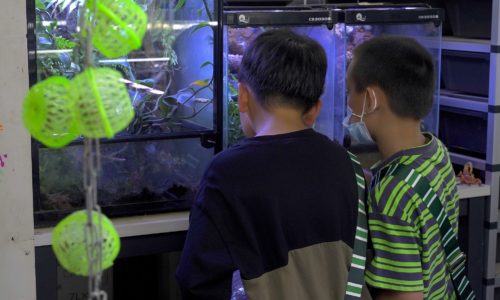
China’s pet market saw an interesting turn last year. A report (in Chinese) by Chinese consulting firm iResearch shows that the industry reached 300 billion yuan ($46.4 billion) in 2020, with a growing number of millennials in first-tier cities starting to raise exotic pets such as bugs and aquatic animals.
“Table pets will be office workers’ go-to pets in the future, as they can be kept on an office table and provide hours of entertainment without too much hassle,” said Wang, who predicts that with more people raising “table pets” (桌面宠物 zhuōmiàn chǒngwù) like insects and reptiles, more people — when their animal companions die — will turn to artists like him for an artistic reincarnation of their deceased pets.
Echoing Wang’s passion for bugs, Féng Yúténg 冯于腾, a 34-year-old steampunk insect artist with a penchant for unconventional pets, told me that he loved being with insects and snakes. “They can calm my nerves,” he said. “Before I became attracted to computer games, in my childhood, my playmates were also insects in the bushes.”
To Wang and Feng, steampunk insects are more than just a business. As insect enthusiasts, they are hoping to get important messages across through their art pieces. For one, they are concerned about the flourishing black market for invertebrates, a little known corner of the illegal wildlife trade.
“There should be a guideline on what to do and what not to do in the exotic pet business in China. Many people do not know the rule,” Feng said, adding that several people he knows in the business were arrested because of selling protected species like Burmese pythons.
Wang also revealed that several exotic bugs in the market were brought by smugglers from Hong Kong and Taiwan to meet the rising demand of Chinese consumers. But as of now, there are no regulations targeting the insect market in China. “I am working on forming an insect association so that we can set some rules in the market to avoid illegal acts,” Wang said.
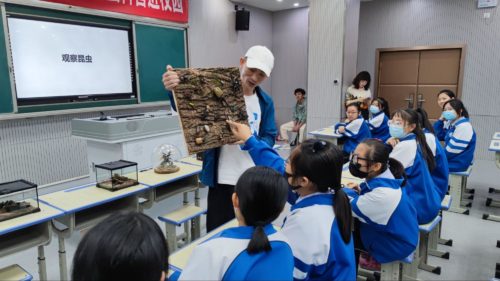
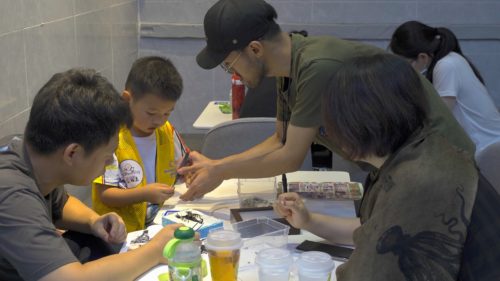
There’s an educational element in their work, too. Sometimes in collaboration with local museums and environmental groups, both artists have formed several programs in China, teaching young children to appreciate insects and create their own steampunk insect art pieces.
Jiāng Sīhán 江思涵, a seven-year-old boy who attended Feng’s steampunk insect-making workshop in Hangzhou, told me that this was his first time making steampunk insect artwork, but he wished to come again, as he enjoys listening to fun facts about those little creatures.
“I often took my son hiking on the mountain to observe beautiful insects,” Feng said. “More kids should get their insect knowledge from nature, not from books.”
At a time when the numbers and diversity of insects are declining globally — a worrying phenomenon that’s been referred to as “insect apocalypse” by scientists — Wang hopes that his art will inspire a reexamination of the link between man and nature. “Nature can nurture human beings who create this mechanical world, but it can also punish us for destroying natural habitats,” he said. “Most of my work shows how insects attack human beings after they are invaded by artificial nuclear weapons.”
